| Article ID | Journal | Published Year | Pages | File Type |
|---|---|---|---|---|
| 4269505 | The Journal of Sexual Medicine | 2015 | 7 Pages |
IntroductionMost of the existing studies on dyspareunia only focus on qualitative observations. These measurement tools may not reflect the actual situation of dyspareunia in Taiwan.AimThis study aimed to estimate the incidence of dyspareunia in Taiwan and investigate dyspareunia-associated comorbidities using the National Health Insurance Research Database (NHIRD).MethodsThis study is a population-based retrospective cohort investigation.Main Outcome MeasuresWe analyzed the 2004–2010 claims data on dyspareunia from the NHIRD. Dyspareunia was identified by outpatient visits using International Classification of Diseases, Ninth Revision, Clinical Modification (diagnosis code 6250). Patients who visited as outpatients with dyspareunia after the index date were considered to have comorbidities associated with dyspareunia medical conditions. The index events included vaginal disorders, vulvar disorders, uterine and ovarian factors, female genital organ and menstrual cycle disorders, menopause, and relative abdominopelvic organ disorders. The incidence of dyspareunia among different age groups was determined. The location and areas significantly related to the physical gynecology or relative pelvic organ causing the disease were also analyzed.ResultsA total of 978 females of different ages had experienced dyspareunia. The incidence of dyspareunia was higher among individuals aged 30–34 years. The findings of this study indicated that dyspareunia was comorbid with menopause, pelvic floor dysfunction, and most gynecological infections. In particular, the more common physical causes of dyspareunia were introitus and vaginal infections (19.95%), menopause (16.80%), female genital organ and menstrual cycle disorders (15.22%), and female pelvic organ infections (13.65%).ConclusionsThis study posits that women of all ages (20–70 years) experience painful sexual intercourse. This large-scale nationwide claims-based study showed that menopause and pelvic infection disorder were dyspareunia-related comorbidities. Moreover, gynecological infections and pelvic floor dysfunctions were associated with dyspareunia. Liu H-L, Lee H-M, and Chung Y-C. Dyspareunia and its comorbidities among Taiwanese women: Analysis of the 2004–2010 Nationwide Health Insurance Database. J Sex Med 2015;12:1012–1018.
